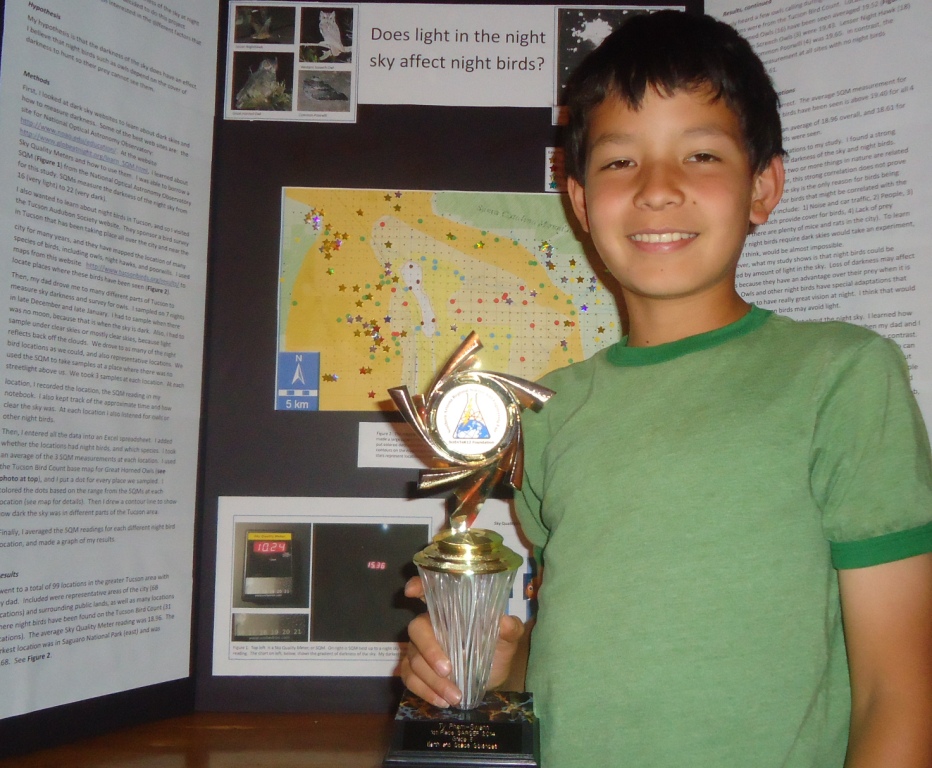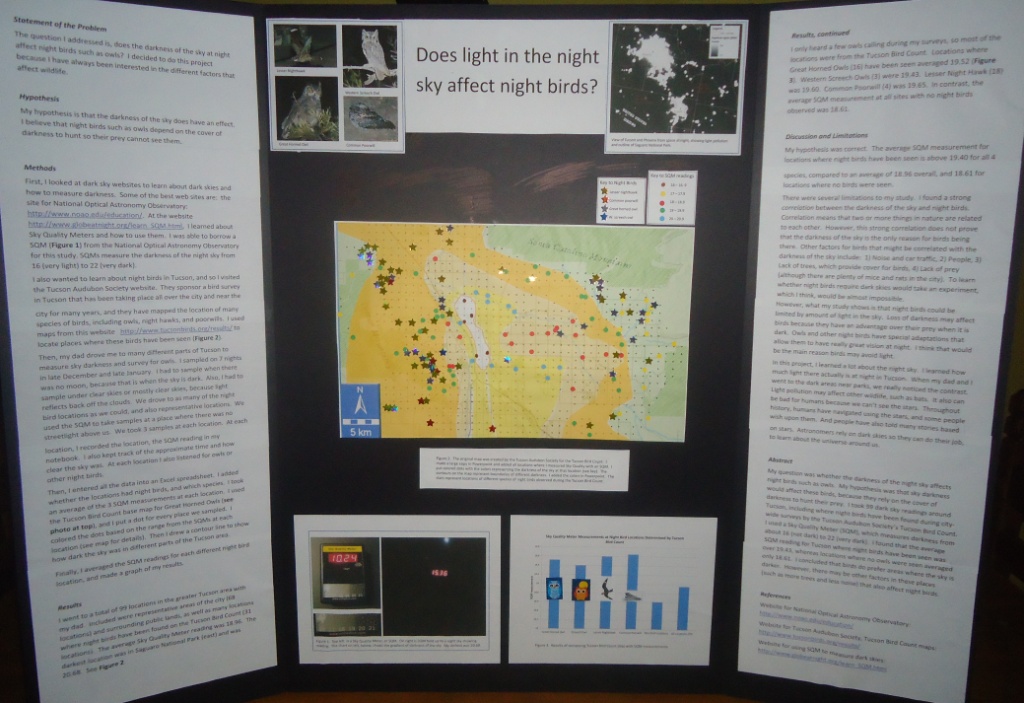Is light pollution for the birds? Not all of them. Read this 5th grader's research that won him 1st place in a regional science fair
by Ty Pham-Swann
My name is Ty Pham-Swann and I created a dark sky project that won a first place prize at the Southern Arizona Regional Science and Engineering Fair (SARSEF). I’m a 5th grade student at Canyon View Elementary in Tucson. My project’s title was, “Does the light in the night sky affect night birds?” I did this project because I’ve always been interested in wildlife and people, and because I was curious about light pollution in the night sky. I also thought that my project would be different than most others at the science fair, and I was right!

Ty with his SARSEF first place trophy.
To collect data for this project, my dad and I drove all over Tucson, Arizona, sampling the darkness of the night sky. I used a Sky Quality Meter (SQM) loaned to us from Dr. Constance Walker, scientist and education specialist with the National Optical Astronomy Observatory (NOAO) in Tucson. Dr. Walker enthusiastically supported my project and sent us to the Globe at Night website so I could learn how the SQM works.

Ty is collecting data with a Sky Quality Meter (SQM).
The absolute hardest thing about my project, but almost the most part fun, was staying up until 10 o’clock at night on school nights in December and January collecting data. We had to sample during the dark of the moon, and also we visited parts of town that were very interesting, including a few neighborhoods where people watched us with great suspicion! But we also visited some of the coolest places, such as the Santa Cruz River, “A” Mountain, and the back side of the Tucson Mountains. At Aqua Caliente Park, we stepped out of our car and heard an owl calling.
We took three measurements at 99 locations in all (so close to 100!). Some were spaced out throughout Tucson, and 38 locations were places where night birds such as Great Horned Owls, Western Screech Owls, Lessor Nighthawks, and Common Poorwills had been seen. How did we know the birds had been seen there? Volunteers with the Tucson Audubon Society and University of Arizona have collected records of birds around Tucson for many years. It is called the Tucson Bird Count, and all the data are mapped on-line at http://www.tucsonbirds.org/results/. We contacted Jennie McFarlan at Tucson Audubon, who sent us additional maps and information.
I entered the data into a spreadsheet and averaged the 3 SQM measurements (which were usually pretty similar) at each location. Then, I compared the average night sky reading to readings where birds were located. As you can see in the graph, the four different kinds of night birds were usually found in the darkest areas of Tucson.

It’s important to say that the darkness of the night sky may not be the only reason why night birds are found in dark places. Dark places often have more trees, less city noise, and more native prey such as rodents. However, it is very likely that the night sky is an important factor in where night birds are found. Why? Studies show that loss of darkness may affect birds because they have an advantage over their prey when it’s dark. Owls have special adaptations that allow them to have really great vision at night. I think that would be the main reason birds may avoid light.
In this project, I learned a lot about the night sky. I learned how much light there actually is at night in Tucson. When my dad and I went to the dark areas near parks, we really noticed the contrast.Light pollution may affect other wildlife, such as bats. One study suggests that animals such as the lesser long-nosed bats, birds, insects, and turtles are can be affected by light pollution causing them to change their behavior.
Light pollution can be bad for humans because then we can’t see the stars. Throughout history, humans have navigated using the stars, and some people wish upon them. And people have also told many stories based on stars. And in places like Tucson, especially, astronomers rely on dark skies so they can do their job, which is to learn about the universe around us.

Ty's poster, "Does Light in the Night Sky Affect Night Birds."








Comments